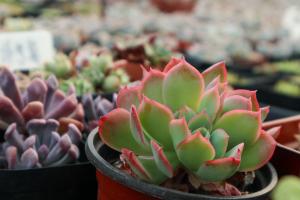Introduction
Hibiscus plants and trees are known for their vibrant and attractive flowers that come in a variety of colors. They are commonly found in tropical and subtropical regions around the world, but can they survive in colder climates? This article will explore how cold hibiscus plants and trees can withstand and offer some tips on how to protect them during colder months.
Hibiscus plants and trees temperature tolerance
Hibiscus plants and trees are tropical and subtropical plants that thrive in warm temperatures ranging from 60°F – 90°F (15°C – 32°C). However, some hibiscus varieties can tolerate temperatures as low as 32°F (0°C) for short periods but may experience damage if exposed to cold temperatures for long periods. When temperatures drop below 28°F (-2.2°C), hibiscus plants and trees may suffer severe damage, and sometimes they may not survive the extreme cold. Therefore, it is essential to take some protective measures to shield them from freezing temperatures.
Protecting hibiscus plants and trees from cold weather
When temperatures drop during winter, hibiscus plants and trees go into dormancy, a natural resting phase that reduces their metabolic activity while awaiting spring re-growth. Here are some of the ways you can keep your hibiscus plants and trees safe during cold weather.
Move hibiscus plants indoors: Bring the hibiscus plants and trees indoors to a warmer location before the first frost strikes. You can place them in a sunny location or under grow lights that mimic sunlight.
Cover hibiscus plants with frost cloth: Use a frost cloth to cover hibiscus plants and trees at night to trap heat and prevent freezing damage.
Avoid over-watering: Water hibiscus plants and trees sparingly as the dormant phase slows down the plant's water uptake. Over-watering may lead to root rot and increase the risk of cold-related damage.
Mulch the plants: adding a layer of organic mulch around the base of hibiscus plants and trees helps to retain moisture and protect the roots from freezing.
Symptoms of cold weather damage
If hibiscus plants and trees are exposed to temperatures below their minimum tolerance range, they may experience some damage. Here are some signs of cold weather damage to watch out for.
Leaf discoloration:The leaves may turn yellow or brown due to water stress or freeze damage.
Stunted growth: Cold temperatures slow down the plant's metabolic activity, resulting in stunted growth.
Drooping or wilting: Cold stress may cause hibiscus plants and trees to wither and droop, especially during extreme cold conditions.
Frozen roots: Frozen soil may cause the roots to rot, leading to the death of hibiscus plants and trees.
Conclusion
In summary, hibiscus plants and trees can tolerate some cold weather but not extreme cold temperatures. Winter care is essential to ensure their survival, and this may include bringing them indoors, using frost cloth to cover them, avoiding over-watering, and mulching around the base. Watch out for signs of cold weather damage and take corrective measures promptly, such as pruning damaged branches, providing warmth or re-potting. With proper care and attention, your hibiscus plants and trees can survive the extreme cold, and bloom again in the following spring.

 how many times do yo...
how many times do yo... how many planted tre...
how many planted tre... how many pine trees ...
how many pine trees ... how many pecan trees...
how many pecan trees... how many plants comp...
how many plants comp... how many plants can ...
how many plants can ... how many plants and ...
how many plants and ... how many pepper plan...
how many pepper plan...





























